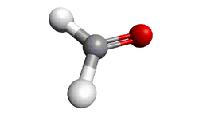|
The initial experimental frequencies have been reported
by
(1) R. Bocquet, J. Demaison, J. Cosléou, A. Friedrich,
L. Margulès, S. Macholl, H. Mäder, M. M. Beaky,
and G. Winnewisser,
1999, J. Mol. Spectrosc. 195, 345.
While most of the reported transition frequencies were
based on these new measurements, additional data were
taken from earlier work by
(2) D. Dangoisse, E. Willemot, and J. Bellet,
1978, J. Mol. Spectrosc. 71, 414;
by
(3) J.-C. Chardon, C. Genty, D. Guichon, N. Sungur,
and J.-G. Theobald,
1974, Compt. Rend. B 278, 1075;
by
(4) K. D. Tucker and G. R. Tomasevich,
1973, J. Mol. Spectrosc. 48, 475;
and by
(5) O. I. Baskakov, E. A. Alekseev, S. F. Dyubko,
and A. S. Shevyrev,
1988, Opt. Spektrosk. 64, 217.
With respect to the first entry from Feb. 2000, additional
extensive far-infrared data have been used in the fit.
These were reported in
(6) J. Lohilahti and V.-M. Horneman,
2004, J. Mol. Spectrosc. 228, 1.
The very extensive data set of the second entry from
Oct. 2004 was supplemented recently by an extensive set
of lines recorded betwenn 1.1 and 1.52 THz and
reported by
(7) O. Zakharenko, R. A. Motiyenko, L. Margulès,
and T. R. Huet,
2015, J. Mol. Spectrosc. 317, 41.
Most lines with uncertainties more than 100 kHz below
990 GHz were omitted. We did not follow the uncertainty
modifications of the Kiel lines from (1) carried out in
(7) except for one line whose uncertainty was increased,
though by a smaller amount. One uncertainty was decreased.
One 1999 Köln line omitted in (7) was also omitted here;
it appears to be caused by a 1 MHz typographical error.
The uncertainties of several sets of lines appear to
be conservative, but have not been modified. However,
we decreased the uncertainties of the lines from (7)
by a factor of 1.5, except for two closely spaced lines.
Lines with uncertainties larger than 1 MHz above 990 GHz
as well as the far-infrared data have not been merged.
The predictions of very high lying rotational states
have been improved with respect to the second entry.
The predictions should be adequate throughout not only for
astronomical observations but also for laboratory spectroscopy.
At low temperatures, it may be necessary to discern between
ortho-D2CO and para-D2CO.
The ortho states are described by Ka
even,the para states by Ka odd.
The nuclear spin-weight ratio is 2 : 1 for
ortho-D2CO : para-D2CO.
The JKaKc = 111
is the lowest para state. It is 5.5983 cm–1
above ground.
The dipole moment was measured by
(8) B. Fabricant, D. Krieger, and J. S. Muenter,
1977, J. Chem. Phys. 67, 1576.
|
